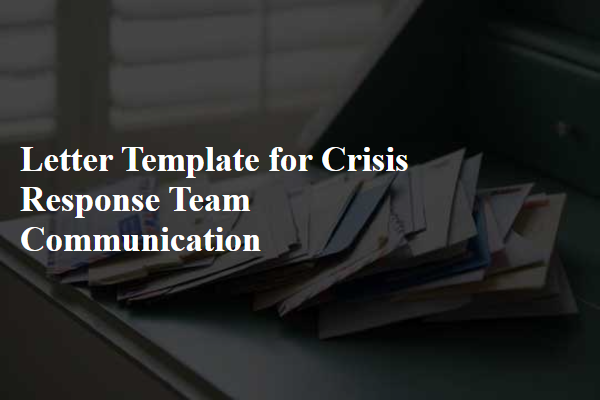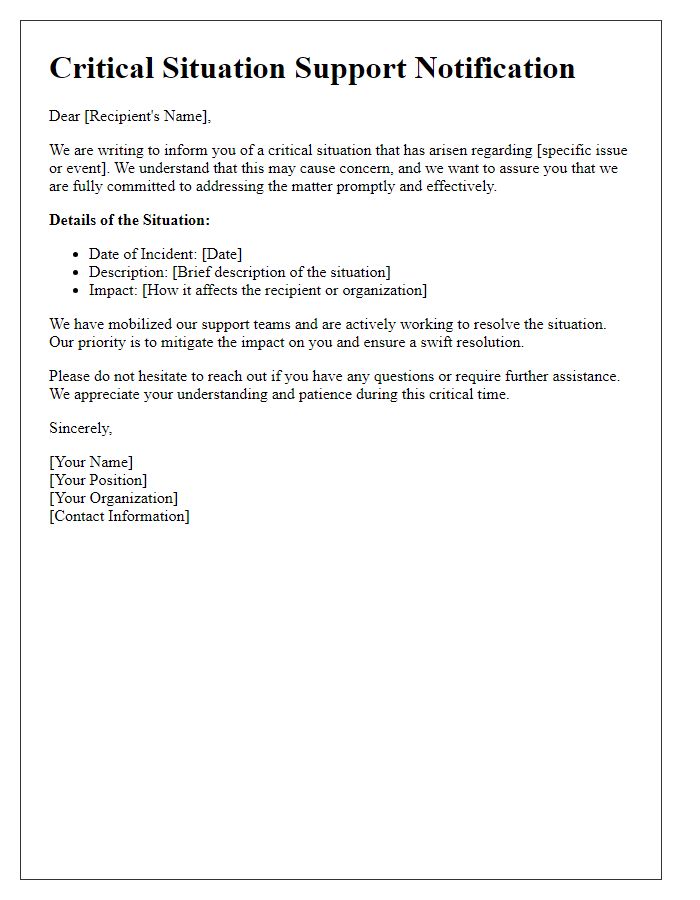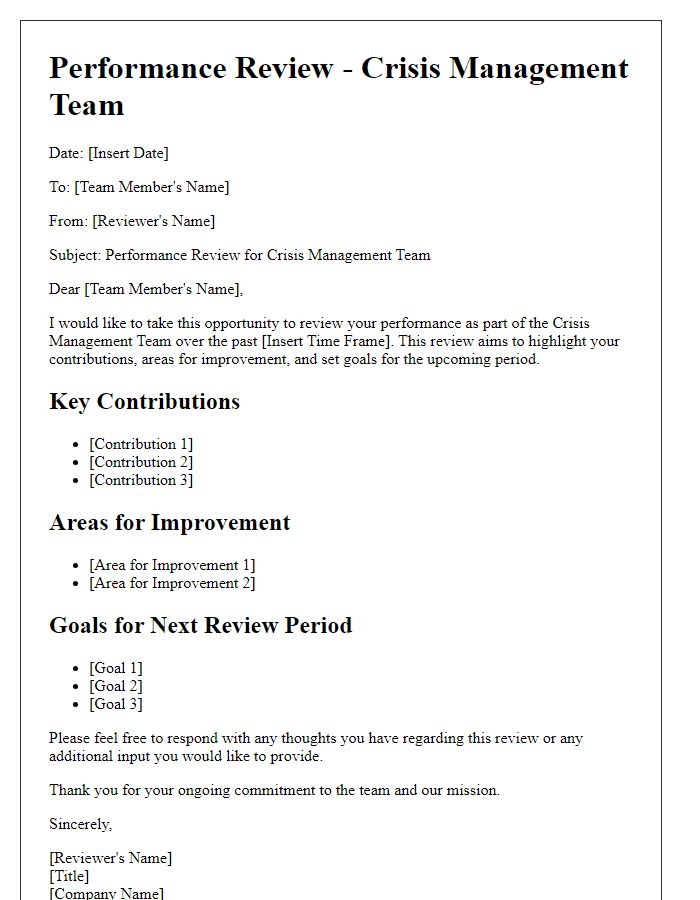In times of crisis, clear communication is essential for maintaining trust and ensuring effective response efforts. Crafting a well-structured letter can help bridge the gap between the crisis response team and the affected parties, allowing everyone to stay informed and engaged. By addressing concerns thoughtfully and offering transparent updates, you can cultivate a sense of community and support during challenging times. Let's explore key elements to include in your crisis response communication to foster understanding and collaborationâread on for more insights!

Clear and concise messaging
In a crisis situation, clear and concise messaging is crucial for effective communication. The designated crisis response team, comprising trained professionals, should disseminate information to stakeholders promptly. Key elements include an overview of the incident, immediate actions taken, and guidance for ensuring safety. Specific timelines for updates can enhance transparency, while contact information for inquiries reinforces accessibility. Regular communication intervals, such as every 1-2 hours, can help manage expectations and reduce misinformation. Visual aids like infographics may accompany messages, illustrating critical points in an easily digestible format. Overall, a focus on clarity and brevity assists in maintaining trust and keeping all involved parties informed during a challenging event.
Empathy and reassurance
The crisis response team's communication must convey empathy and reassurance during challenging times. In a situation like the 2020 COVID-19 pandemic, lives were disrupted worldwide. The number of affected individuals exceeded 200 million globally, with countless families facing uncertainties. In the affected areas, such as New York City, healthcare systems struggled under the pressure of increased hospitalizations. This crisis highlighted the importance of transparent communication from organizations. Key messages should express understanding of individuals' fears, offer support resources like counseling services, and reiterate the commitment to community safety. Active engagement through regular updates across platforms such as social media or community meetings can foster a sense of unity and resilience among stakeholders.
Regular updates and transparency
In crisis management scenarios, consistent updates and transparency are essential to maintaining trust and clear communication. Regular updates, ideally occurring at designated intervals (e.g., every 24 hours), provide stakeholders, including employees, partners, and the public, with crucial information about the status of the crisis, response efforts, and mitigation strategies. Transparency regarding challenges faced and progress made fosters an environment of accountability and encourages collaboration. Utilizing multi-channel communication platforms, such as email, social media, and press releases, ensures that information reaches a broad audience, while maintaining clarity in language to avoid misunderstandings. This approach not only keeps all parties informed but also empowers them to make informed decisions in response to the evolving situation. Regular assessments of the crises should also be shared, reflecting changes in severity or management strategies as they develop.
Action plan and next steps
The crisis response team should implement a comprehensive action plan during emergencies to ensure effective communication and resolution of the issue at hand. Key steps include the identification of critical stakeholders, such as local government agencies (e.g., FEMA in the United States), and establishment of a centralized command center for real-time updates. Timely dissemination of information is crucial; utilizing platforms like social media (e.g., Twitter, Facebook) ensures that updates reach a broader audience quickly. Developing a resource allocation strategy to deploy supplies, such as food and medical aid, can aid in supporting affected communities efficiently, especially in disaster-stricken areas like the Gulf Coast or regions impacted by wildfires. Continuous monitoring of the situation allows for agile adjustments to the action plan, ensuring all team members remain informed. Regular briefings help maintain clarity on next steps and responsibilities, fostering a unified approach to crisis management. Collaboration with healthcare facilities and NGOs enhances support structures, guaranteeing that the response is coordinated and effective.
Contact information for inquiries
In times of crisis, effective communication is paramount for ensuring clarity and responsiveness. A dedicated crisis response team (CRT) operates to address urgent inquiries, manage public relations, and coordinate recovery efforts. The CRT can be reached at a centralized contact number (1-800-555-0199) and via email at crisis@organization.com. For localized issues, teams are deployed to key affected areas, such as downtown Los Angeles or the New Orleans neighborhood. Regular updates are provided through social media channels, with briefings scheduled twice daily to keep stakeholders informed. Emergency management protocols (such as FEMA guidelines) are adhered to, ensuring the highest level of preparedness.













Comments